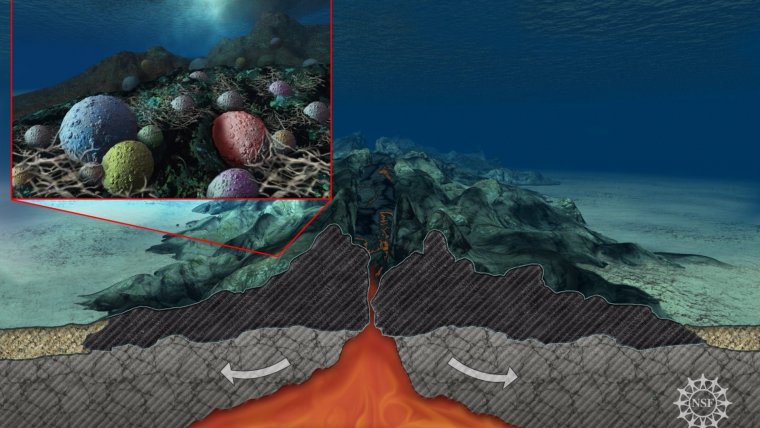| News / Science News |
No limit to life in deep sediment of ocean's "deadest" region
NSF | MARCH 22, 2015
Scientists have found oxygen and oxygen-breathing microbes all the way through the sediment from the seafloor to the igneous basement at seven sites in the South Pacific gyre, considered the "deadest" location in the ocean.

Scientists have found that rocks beneath the seafloor are teeming with microbial life. ![]()
Their findings contrast with previous discoveries that oxygen was absent from all but the top few millimeters to decimeters of sediment in biologically productive regions of the ocean.
Based on the core samples they collected in 2010, they believe that oxygen and aerobic microbes occur throughout the sediment in up to 37 percent of the world's oceans and 44 percent of the Pacific Ocean.
They found that the best indicators of oxygen penetration to the igneous basement are a low sedimentation accumulation rate and a relatively thin sediment layer. Sediment accumulates at just a few decimeters to meters per million years in the regions where the core samples were collected.
In the remaining 63 percent of the ocean, most of the sediment beneath the seafloor is expected to lack dissolved oxygen and to contain anaerobic communities.
The team found extremely slow rates of respiration and approximately 1,000 cells per cubic centimeter of subseafloor sediment in the South Pacific gyre--rates and quantities that had been nearly undetectable.
YOU MAY ALSO LIKE


